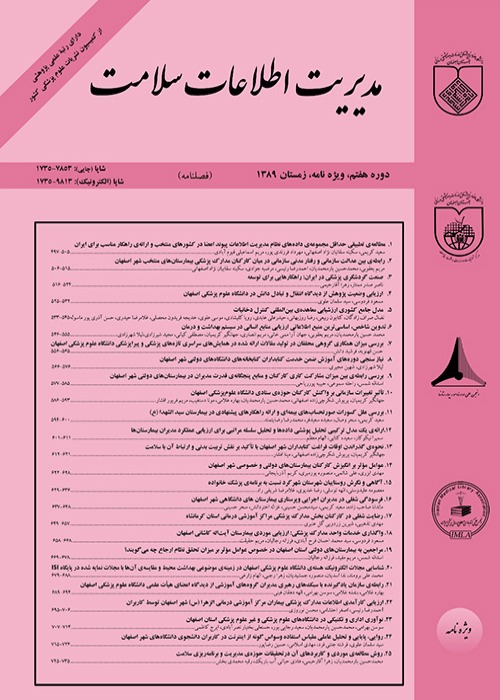Designing and Construction of Children Congenital Heart Disease Ontology in Persian Language
One of the semantic tools for retrieving knowledge from complex resources is ontology. With the advent of semantic web technologies, mapping and designing ontologies, as a tool for organizing and representing knowledge, seems necessary. The purpose of this article was developing congenital heart disease ontology, and introducing its construction stages.
The present study was conducted using content analysis method. The statistical population of the study consisted of all specialized Persian and English information resources in the field of congenital heart diseases in digital library of Isfahan University of Medical Sciences, Isfahan, Iran. The basis and the core of the methodology used to create congenital heart disease ontology were the Mohammadi-Ostani et al. and Bermejo methods. In total, nine steps to build this ontology were as follows: 1. defining the scope and coverage of the subject, 2. identifying information sources (documents, books, and articles), 3. identifying terms and concepts, 4. identifying subject coverage and defining the domain and the main classes, 5. defining the hierarchy of terms and concepts, 6. defining the relationships between terms and concepts, 7. describing the characteristics of categories and the relationships between them, 8. defining the relationships among examples, and 9. establishing constraints, functions, and rules. In order to confirm the content validity, during the designing and editing of the ontology, the opinions of 7 pediatric cardiologists in Isfahan University of Medical Sciences were used at the third to sixth stages. The Protégé software was used to build ontology.
The congenital heart disease ontology included 6 main classes, 1. common congenital heart disease, 2. disease-related organs, 3. treatment methods, 4. diagnostic methods, 5. symptoms diseases, and 6. risk factor. Moreover, 8 main relationships were identified between concepts and terms as 1. diagnosed by, 2. feed, 3. treated by, 4. treated, 4. caused, 6. has complication, 7. is symptoms of, 8. is complication of have 2 sub-relationships is related with, has risk factor.
This ontology can be a useful and efficient tool for organizing and retrieving knowledge in this field. The method of this research can be applied to develop knowledge structure in other fields, too.</div>
- حق عضویت دریافتی صرف حمایت از نشریات عضو و نگهداری، تکمیل و توسعه مگیران میشود.
- پرداخت حق اشتراک و دانلود مقالات اجازه بازنشر آن در سایر رسانههای چاپی و دیجیتال را به کاربر نمیدهد.




